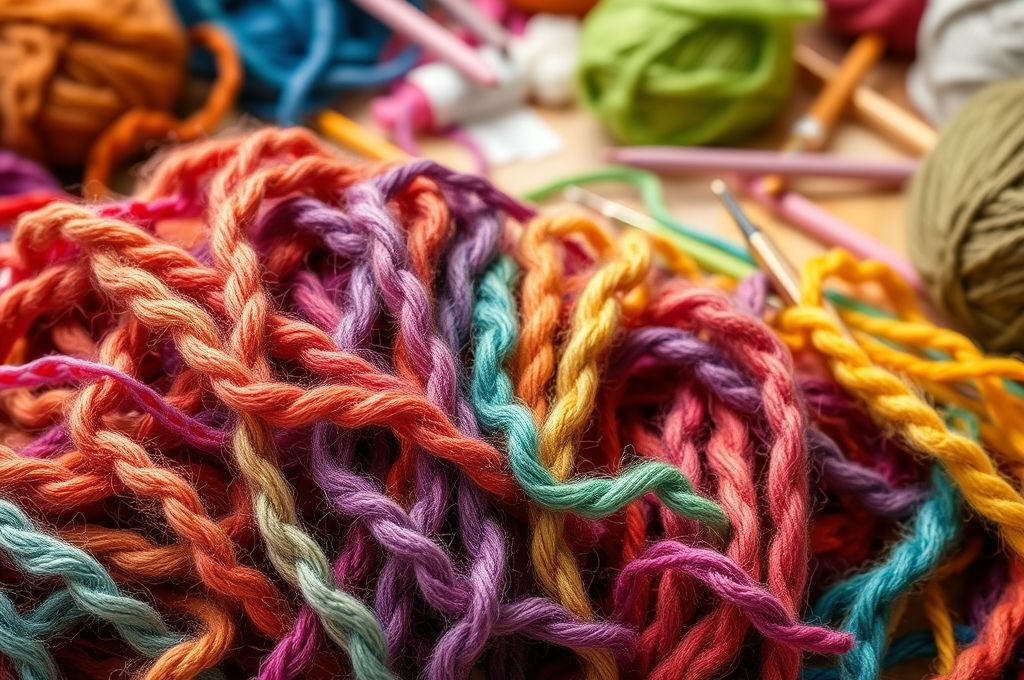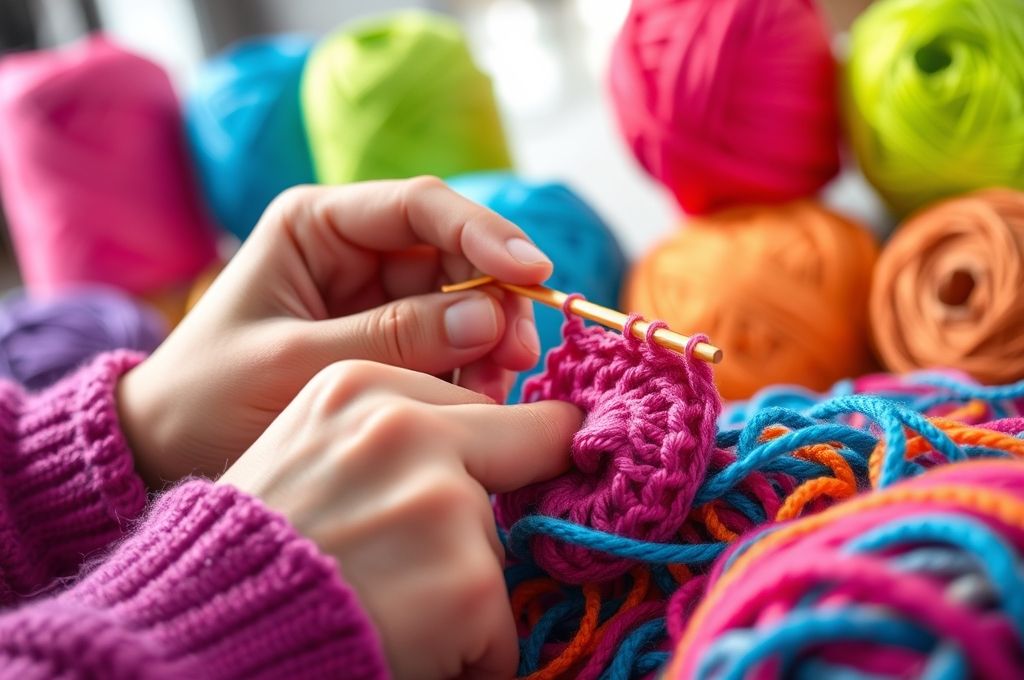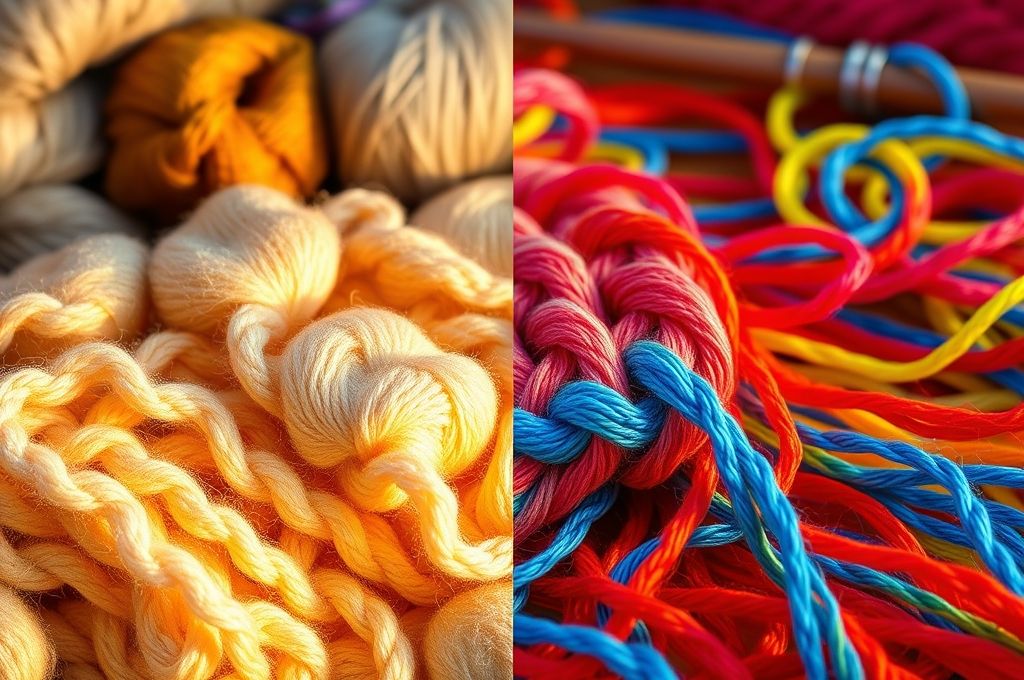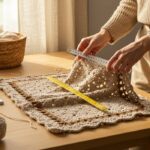The Hidden Power of Fiber
Imagine this: you’re standing in the fabric aisle of a store, staring at a label that reads “100% cotton” on one shirt and “polyester blend” on another. You want something comfortable, durable, and maybe even eco-friendly—but how do you choose? The answer lies in understanding fiber types, the building blocks of every textile we wear, sit on, and sleep under.
Fibers are more than just threads; they shape how our clothes feel, how long they last, and even their impact on the planet. From the softness of a cotton t-shirt to the stretch of a yoga pant made from spandex, fibers play a crucial role in our daily lives. And when it comes to choosing between natural and synthetic fibers, the decision isn’t just about comfort—it’s about sustainability, health, performance, and personal values.
In this article, we’ll break down the key differences between natural and synthetic fibers, explore their benefits and drawbacks, and help you make smarter, more informed choices—whether you’re shopping for clothes, home textiles, or simply curious about what’s in your wardrobe.
We’ll look at where these fibers come from, how they’re made, how they affect the environment, and how they perform in real-life situations. You’ll walk away with practical tips, eye-opening facts, and a deeper appreciation for the fabrics that surround you every day.
So, let’s dive into the world of fibers—where science meets style, and sustainability meets comfort.
What Are Fibers, and Why Do They Matter?

Before we compare natural and synthetic fibers, let’s get clear on what fibers actually are.
Fibers are thin, thread-like structures that can be spun into yarns and woven or knitted into fabrics. They’re the foundation of all textiles, from the sheets on your bed to the shoes on your feet. Think of them as the DNA of fabric—each type carries unique traits that influence texture, strength, breathability, and more.
There are two main categories: natural fibers, which come from plants, animals, or minerals, and synthetic fibers, which are man-made, usually derived from petroleum-based chemicals.
Natural fibers include:
- Cotton (from the cotton plant)
- Wool (from sheep and other animals)
- Silk (produced by silkworms)
- Linen (made from the flax plant)
- Hemp and jute (from sturdy plants)
Synthetic fibers include:
- Polyester (the most widely used synthetic)
- Nylon (known for strength and elasticity)
- Acrylic (often used as a wool substitute)
- Spandex or Lycra (famous for stretch)
- Rayon (a semi-synthetic fiber made from wood pulp)
Why does this matter? Because each fiber behaves differently. Cotton breathes well but wrinkles easily. Polyester resists wrinkles but traps heat. Wool keeps you warm but can be itchy. Knowing these traits helps you pick the right fabric for the right purpose.
And beyond personal comfort, fiber choice affects the environment, worker conditions, and even microplastic pollution in our oceans. A simple t-shirt might seem harmless, but its fiber content tells a much bigger story.
So, whether you’re dressing for a workout, choosing baby clothes, or furnishing your home, understanding fiber types empowers you to make choices that align with your lifestyle and values.
Natural Fibers: Comfort Rooted in Nature
Natural fibers have been used by humans for thousands of years. Long before factories and chemicals, people relied on what the earth provided—cotton for summer clothes, wool for winter warmth, silk for luxury garments.
One of the biggest advantages of natural fibers is comfort. They tend to be breathable, soft, and gentle on the skin. Cotton, for example, is highly absorbent—pulling moisture away from your body and helping you stay cool in hot weather. That’s why it’s the go-to choice for t-shirts, underwear, and bed sheets.
Wool, though often associated with itchiness, is actually a high-performance fiber. It insulates even when wet, resists odors, and regulates temperature. Modern merino wool is so fine it feels like silk against the skin—perfect for base layers in cold climates.
Silk is another natural wonder. It’s lightweight, strong, and naturally hypoallergenic. Because it doesn’t absorb moisture from your skin, it’s often recommended for people with sensitive skin or acne.
Then there’s linen, made from the flax plant. It’s one of the strongest natural fibers and gets softer with every wash. Linen is incredibly breathable, making it ideal for summer clothing and home textiles. It’s also biodegradable and requires less water and pesticides than cotton when grown sustainably.
But natural fibers aren’t perfect. They can be prone to shrinking, wrinkling, or fading. Cotton may lose its shape over time, and wool needs special care to avoid damage. They also tend to take longer to dry than synthetics.
Still, many people love natural fibers for their authentic feel and connection to nature. There’s something satisfying about wearing a cotton shirt that started as a plant or a wool sweater spun from sheep’s fleece.
And from an environmental standpoint, natural fibers are generally more biodegradable than synthetics—though farming practices can vary widely in sustainability. Organic cotton, for instance, uses less water and avoids harmful pesticides, making it a better choice for the planet.
Synthetic Fibers: Innovation, Performance, and Pitfalls

If natural fibers are about tradition and comfort, synthetic fibers are about innovation and performance. Created in labs, these materials were developed to solve specific problems—like creating wrinkle-free shirts, stretchy sportswear, or water-resistant jackets.
Take polyester, the most common synthetic fiber. It’s durable, quick-drying, and resistant to shrinking and stretching. That’s why it’s used in everything from outdoor gear to athletic wear. Polyester also holds color well, so your bright red jacket won’t fade after a few washes.
Nylon is another powerhouse. Invented in the 1930s, it was originally used for toothbrush bristles and women’s stockings. Today, it’s found in everything from parachutes to swimwear. It’s strong, elastic, and abrasion-resistant—perfect for activewear and luggage.
Spandex (also known as Lycra or elastane) is the fiber behind stretch. Just a small percentage in a fabric—say, 5%—can make jeans more comfortable or leggings more flexible. It’s revolutionized fashion and sportswear, allowing for form-fitting clothes that move with your body.
And then there’s acrylic, often used as a cheaper, cruelty-free alternative to wool. It’s soft, lightweight, and retains heat well—great for sweaters and blankets.
But here’s the catch: most synthetic fibers are made from petroleum, a non-renewable resource. The production process involves high energy use and chemical treatments, which can pollute air and water if not managed responsibly.
Even more concerning is the issue of microplastics. Every time you wash synthetic clothes, tiny plastic fibers—microplastics—shed into the water. These particles end up in rivers, oceans, and even the food chain. Studies estimate that a single load of laundry can release over 700,000 microplastic fibers.
Plus, synthetic fibers don’t biodegrade. A polyester shirt could sit in a landfill for hundreds of years, slowly breaking down into smaller plastic fragments.
So while synthetics offer undeniable benefits—durability, affordability, performance—they come with environmental costs that are hard to ignore.
The Environmental Impact: What Your Clothes Leave Behind
When we think about pollution, we often picture smokestacks or plastic bottles. But our clothes? They’re part of the problem, too—and fiber type plays a huge role.
Let’s start with natural fibers. While they come from renewable sources, their environmental footprint isn’t zero. Conventional cotton, for example, is one of the most water-intensive crops in the world. It can take 2,700 liters of water to produce just one cotton t-shirt—that’s enough drinking water for one person for 2.5 years.
Cotton farming also relies heavily on pesticides and fertilizers, which can degrade soil and harm wildlife. However, organic cotton and regenerative farming practices are changing this. These methods use less water, avoid synthetic chemicals, and improve soil health.
Wool and silk have lower water footprints but raise concerns about animal welfare and land use. Still, when sourced responsibly, they’re biodegradable and renewable.
Now, synthetic fibers present a different kind of challenge. Because they’re made from fossil fuels, their production contributes to greenhouse gas emissions. Polyester production alone accounts for over 700 million barrels of oil each year.
And as mentioned earlier, microplastic pollution is a growing crisis. These tiny fibers pass through wastewater treatment plants and end up in oceans, where they’re ingested by fish and other marine life. Research shows microplastics are now found in human blood, lungs, and even placentas.
But there’s hope. Innovations like recycled polyester (made from plastic bottles) reduce the need for new oil and keep waste out of landfills. Some brands are also using bio-based synthetics, like fibers made from corn or algae, which break down more easily.
Additionally, tools like washing bags (e.g., Guppyfriend) and filter systems can catch microfibers during laundry, reducing pollution.
The bottom line? No fiber is perfect, but awareness and better choices can make a big difference. Choosing high-quality, long-lasting clothes—whether natural or synthetic—reduces waste and environmental harm.
Performance and Practicality: Which Fiber Wins for Your Lifestyle?
Let’s get practical: how do natural and synthetic fibers perform in real life?
Imagine you’re going on a hiking trip. You need clothes that are lightweight, moisture-wicking, and quick-drying. In this case, a synthetic blend—like polyester with a bit of spandex—might be your best bet. It won’t soak up sweat, dries fast, and resists odors.
Now, picture a hot summer day at a picnic. You want something cool, breathable, and comfortable. A linen shirt or a cotton dress would be ideal. Natural fibers allow air to circulate, keeping you from overheating.
For sleepwear, many people prefer cotton or bamboo (a semi-synthetic natural fiber) because they’re soft and gentle on the skin. Silk pajamas are a luxury choice—cool in summer, warm in winter, and great for hair and skin.
Athletes often rely on synthetic blends for performance. A running shirt made from polyester and spandex wicks sweat, stretches with movement, and maintains its shape. But some people find synthetics too hot or smelly after a workout, since they don’t absorb moisture as well as natural fibers.
Durability is another factor. Synthetics generally last longer and resist wear and tear better than natural fibers. A nylon backpack will survive rough trails better than a canvas one. But natural fibers like wool and linen are surprisingly strong and can last for years with proper care.
Wrinkling is a common issue. Linen and cotton wrinkle easily, which some people love (it gives a relaxed, lived-in look), while others hate (it looks messy). Synthetics like polyester are wrinkle-resistant, making them popular for travel clothes.
And let’s talk about care and maintenance. Wool and silk often require hand-washing or dry cleaning, while most cotton and synthetic clothes can go in the washing machine. But over-washing synthetics increases microplastic shedding, so experts recommend washing them less often and in cold water.
Ultimately, the best fiber depends on your needs, climate, and activities. Many modern clothes use blends—like 60% cotton and 40% polyester—to get the best of both worlds: breathability, durability, and easy care.
Sustainability and Ethics: Beyond the Label
Choosing fibers isn’t just about performance—it’s also about values.
Are you concerned about animal welfare? Then you might avoid wool or silk unless they’re certified humane. Some brands now offer vegan wool alternatives made from plant-based or recycled materials.
Do you care about fair labor practices? Many natural fibers, like cotton, are grown in countries where farmers face low wages and poor working conditions. Look for Fair Trade or GOTS (Global Organic Textile Standard) certifications to ensure ethical production.
Environmental impact is another key concern. While natural fibers are biodegradable, their farming can still harm ecosystems. Conversely, synthetic fibers last forever in landfills but can be recycled.
One promising trend is the rise of circular fashion—designing clothes that can be reused, recycled, or composted. Brands are experimenting with biodegradable synthetics and closed-loop production systems, where water and chemicals are reused.
Consumers can help by:
- Buying less, choosing well (investing in high-quality pieces that last)
- Caring for clothes properly (washing less, air-drying, repairing)
- Recycling or donating old garments
- Supporting sustainable brands
Even small changes add up. Wearing a cotton shirt for one extra year can reduce its carbon footprint by 24%.
Innovation and the Future of Fibers
The textile industry is evolving fast. Scientists and designers are creating next-generation fibers that combine the best of both worlds.
Take TENCEL™ (lyocell), made from sustainably sourced wood pulp. It’s soft like silk, strong like polyester, and produced in a closed-loop system that recycles 99% of solvents. It’s biodegradable and requires far less water than cotton.
Piñatex is another exciting innovation—a leather alternative made from pineapple leaf fibers, a byproduct of agriculture. It’s cruelty-free, sustainable, and supports farming communities.
Recycled ocean plastic is being turned into swimwear and sportswear. Companies like Patagonia and Adidas have led the way, proving that waste can become high-performance fabric.
Lab-grown materials are also emerging. Bolt Threads created Microsilk, a bioengineered silk made by yeast, without silkworms. Mylo, a leather alternative, is made from mushroom roots.
Even spider silk is being replicated in labs—stronger than steel and incredibly elastic.
These innovations show that the future of fashion doesn’t have to be a choice between comfort, performance, and sustainability. We can have all three.
But technology alone isn’t the solution. Consumer habits, policy changes, and corporate responsibility are equally important.
Making Smarter Choices: A Practical Guide
So, what should you do with all this information?
Here are 5 simple steps to make better fiber choices:
- Read the Labels
Check what your clothes are made of. Look for natural fibers, recycled materials, or sustainable certifications. - Choose Blends Wisely
A cotton-polyester blend can offer comfort and durability. Just be aware of microplastic shedding. - Wash Smarter
Use a microfiber-catching bag, wash in cold water, and skip the dryer when possible. This extends garment life and reduces pollution. - Invest in Quality
One well-made linen shirt lasts longer than three cheap polyester ones. Slow fashion saves money and the planet. - Support Sustainable Brands
Look for companies that prioritize transparency, ethics, and eco-friendly materials.
And remember: you don’t have to be perfect. Start small. Maybe switch one item—your favorite t-shirt or your workout gear—to a more sustainable option. Every choice counts.
Conclusion: Weaving a Better Future, One Fiber at a Time
We’ve covered a lot—from the softness of cotton to the strength of polyester, from ancient wool traditions to futuristic lab-grown silk. The truth is, both natural and synthetic fibers have their place. Each has strengths and weaknesses, and the best choice depends on your needs, values, and lifestyle.
Natural fibers connect us to nature, offering comfort and biodegradability. Synthetics bring innovation, durability, and performance. The future lies not in choosing one over the other, but in using both more responsibly.
By understanding fiber types, we gain power—the power to make informed decisions, reduce our environmental impact, and support a more ethical fashion industry.
So next time you’re shopping, pause for a moment. Look at the label. Ask yourself: Where did this come from? How was it made? How will it affect the planet?
Small questions can lead to big changes.
And now, I’d love to hear from you: What’s your go-to fiber for everyday wear? Do you prefer the breathability of cotton, the stretch of spandex, or something entirely different? Share your thoughts in the comments—let’s start a conversation about the fabrics we live in.
Together, we can weave a future that’s not only stylish but also sustainable, one fiber at a time.

Daniele Ferreira is passionate about the world of crochet, dedicating her time to exploring techniques, creating unique pieces, and sharing her knowledge with beginners and aficionados alike. With attention to detail and creativity, she transforms yarn into true works of art, inspiring others to discover the beauty and joy of this manual art.







